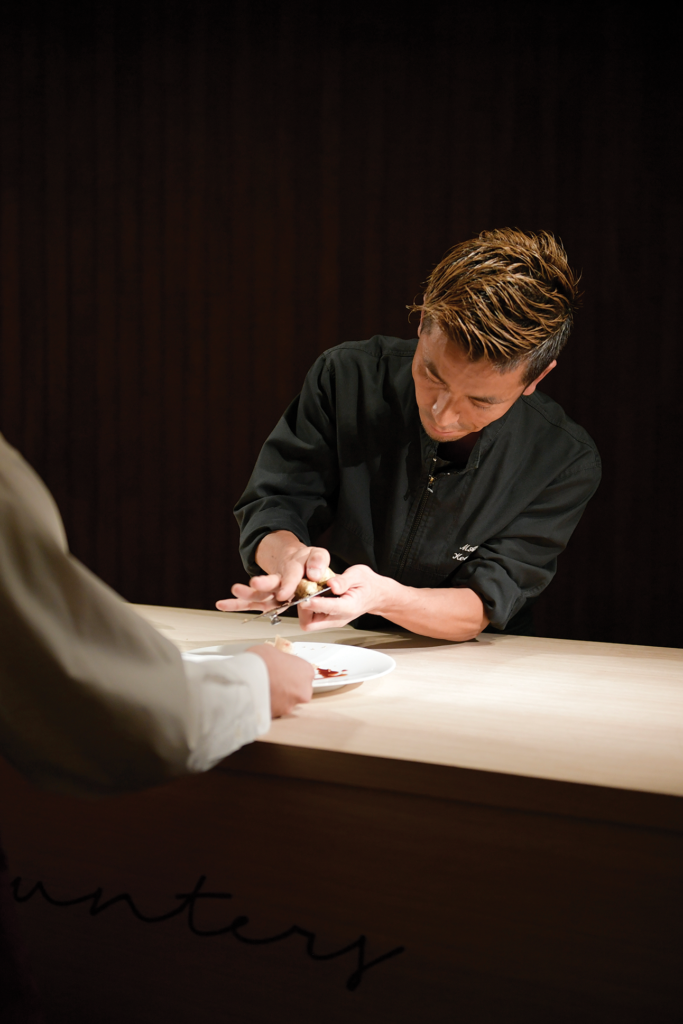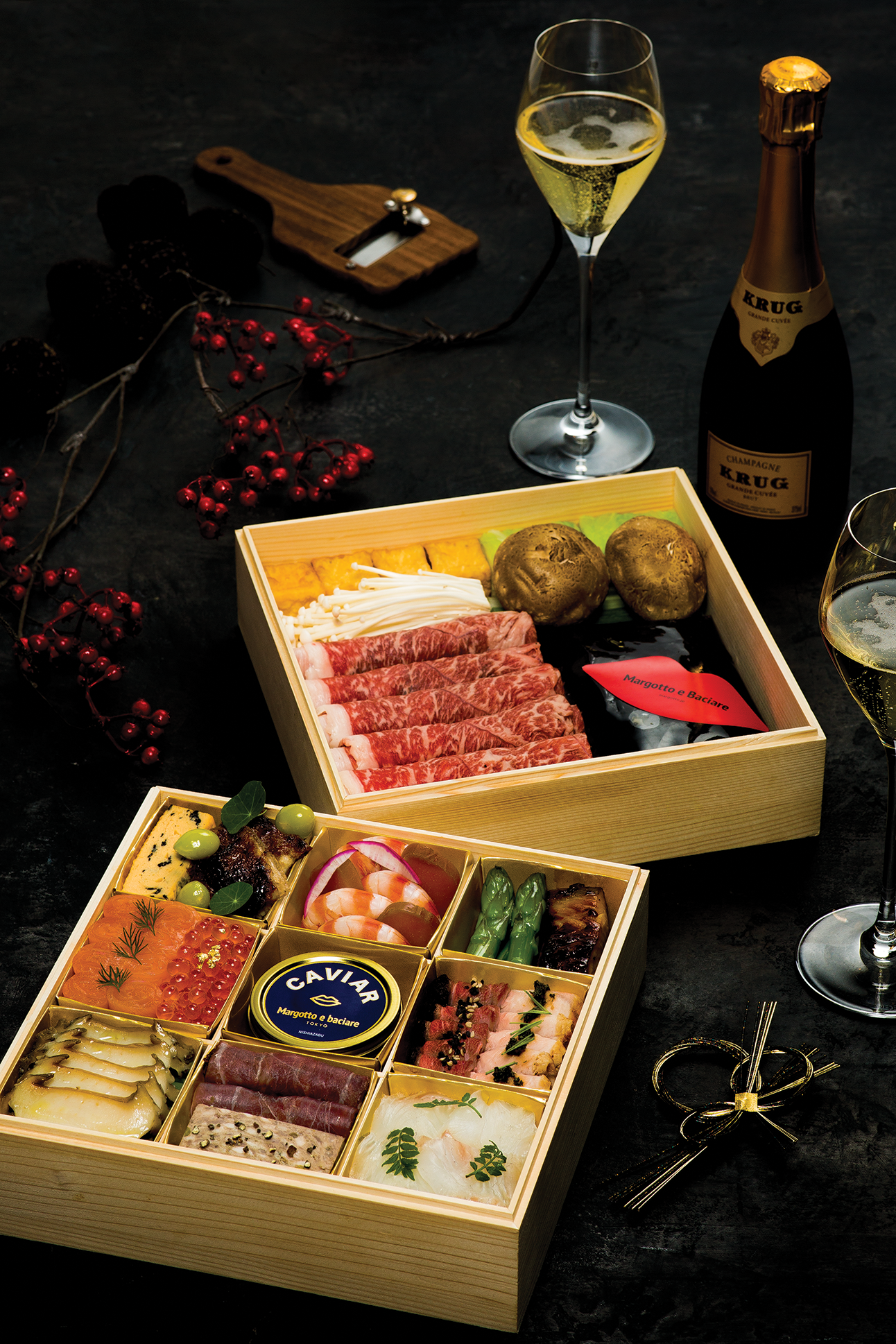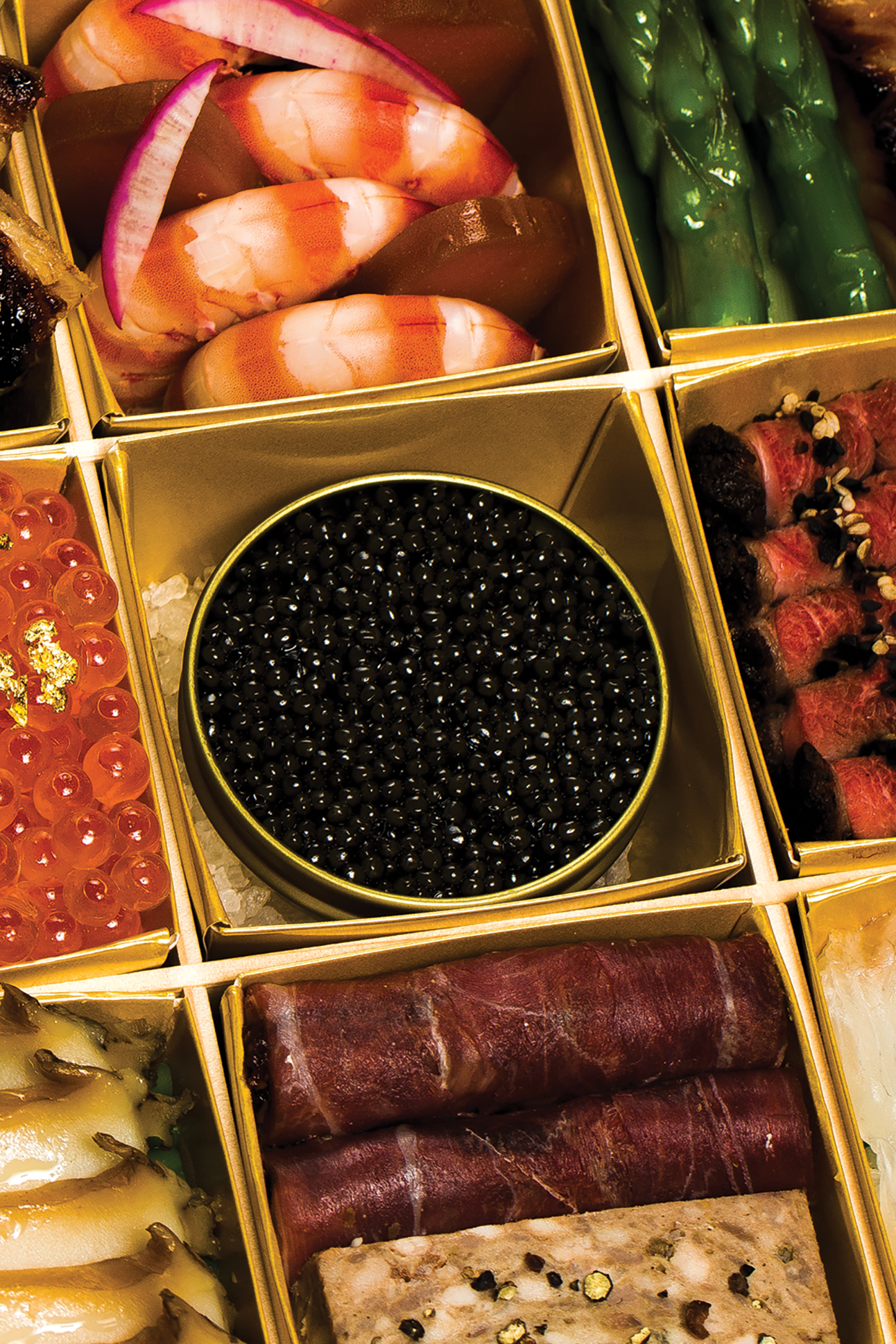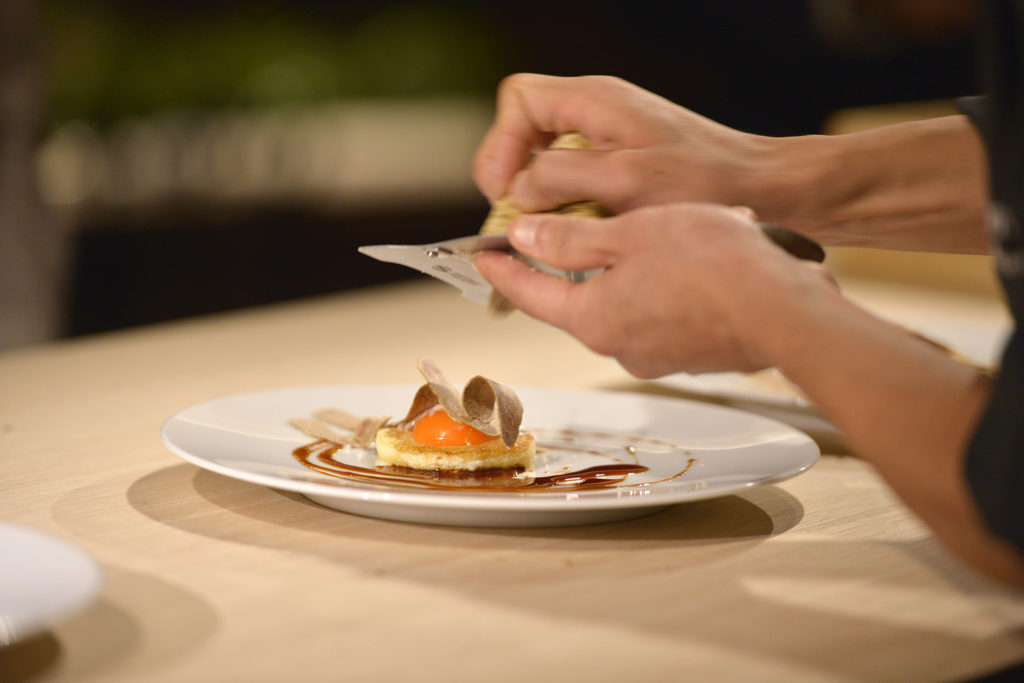Text by Lesa Griffith
Images courtesy of Margotto Hawaii
When Tokyo-based tech exec and bon vivant Kazumoto “Robert” Hori couldn’t find the right balance of luxe ingredients and relaxed atmosphere that he looked for in a restaurant, he created his own. The result was Margotto e Baciare, opened in 2014 in Tokyo’s Roppongi district. Now he is branching out to places that he loves. In June 2022, he opened his first outpost—Margotto Hawaii, where truffle hunters go to indulge in the fanciest of fungi.
While Margotto sounds Italian, it is actually a play on “marugoto,” Osaka dialect for “the whole thing.” Referencing its properties as an aphrodisiac, Hori encourages diners to “eat the whole truffle and kiss your date,” he says, chuckling.
Hori is a “carpe diem” type of guy. When he isn’t running his pioneering digital content company, Cybird, he’s surfing on O‘ahu or running trail races in Chamonix, France. He has competed in the grueling 156-mile Marathon des Sables through the Saharan sands of Morocco. But he is no ascetic living on massaged kale.

The concept for Margotto was born in Hori’s home. He was taking clients to restaurants five days a week and realized there were few places he loved enough to want to eat at weekly. So he entertained at home, buying and preparing one of his favorite ingredients—truffles—and pairing them with selections from his wine cellar.
“I was a terrible cook, but my friends were still enjoying it,” Hori laughs. To up the ante, he engaged Tokyo’s top chefs to make truffle magic. One of those chefs was Hiroyuki Kanda, whose eponymous restaurant has earned three Michelin stars since 2008, when the guide began awarding the ratings in Japan.
Kanda encouraged Hori to open a restaurant, and the entrepreneur took him up on the challenge—if Kanda could deliver him a stellar chef. Enter Kenta Kayama, whose resume includes Kanda and L’Atelier de Joël Robuchon, and who now serves as executive chef of Margotto Group. Working with Honolulu executive chef Yohei Yagishita, he delivers that successful marriage of French and Japanese cuisines, with a shot of Italian. Think haute cuisine with dashi.
The best truffles give off a potent aroma that affects your brain—it is made up of chemicals that mimic mammals’ pheromones. Add to that their rarity (they are difficult to farm and hard to find in the wild due to climate change) and short shelf life (once dug out of the ground, they are at their best for just four days, when they start losing their heady scent), and you have a delicacy to rival caviar.


The most prized truffles come from France and Italy in winter, so in summer, truffles from the Southern Hemisphere—Australia and even Chile and South Africa—fill the seasonal gap.
Truffles are best enjoyed when shaved fresh atop simple dishes. Classic European truffle pairings include egg (like an omelet in France) and pasta (like cacio e pepe in Italy). Margotto sticks to that tradition, with signature dishes such as a round of toasted Japanese milk bread topped with a rich orange yolk and surrounded by a port reduction, and house-made linguine tossed with butter and Parmesan, both blanketed in truffle shavings.
Margotto Hawaii offers a chef’s tasting of 11 courses for $100. With the tasting, diners choose a type and amount of truffle to be shaved atop select dishes at an additional cost, since the price of truffles, like gold, changes with the market. A server brings a box of the fungi for examination and recommends 20 grams per person for the full truffle experience. A gram is equivalent to the mass of a dollar bill.

Hori estimates that black truffles will be $3.75 per gram this winter, and white truffles will go for $10 per gram. Prices tend to be higher at the beginning of the season.
The wine list is chock full of Bordeaux and Burgundy stars, along with rare French, Italian, and Spanish wines of limited production. As Hawai‘i’s only Krug ambassador restaurant, Margotto serves the house’s full line of Champagnes.
Hori designed the clean, contemporary space himself and says he likes guests to feel like they are at a friend’s house—relaxed but not too relaxed. It’s a concept encapsulated in one of the menu’s signatures, the humble Japanese egg-and-rice bowl known as tamago kake gohan, or TKG, made with premium Akitakomachi rice, OK Farms eggs from Waimānalo, and a house-made shoyu that is a blend of 10 imported shoyus and dashi, all topped with truffles. Familiar made fabulous.





